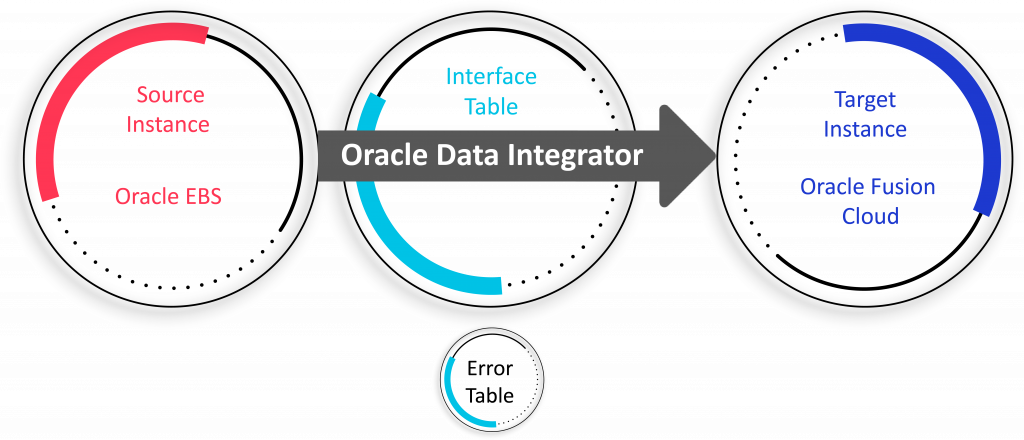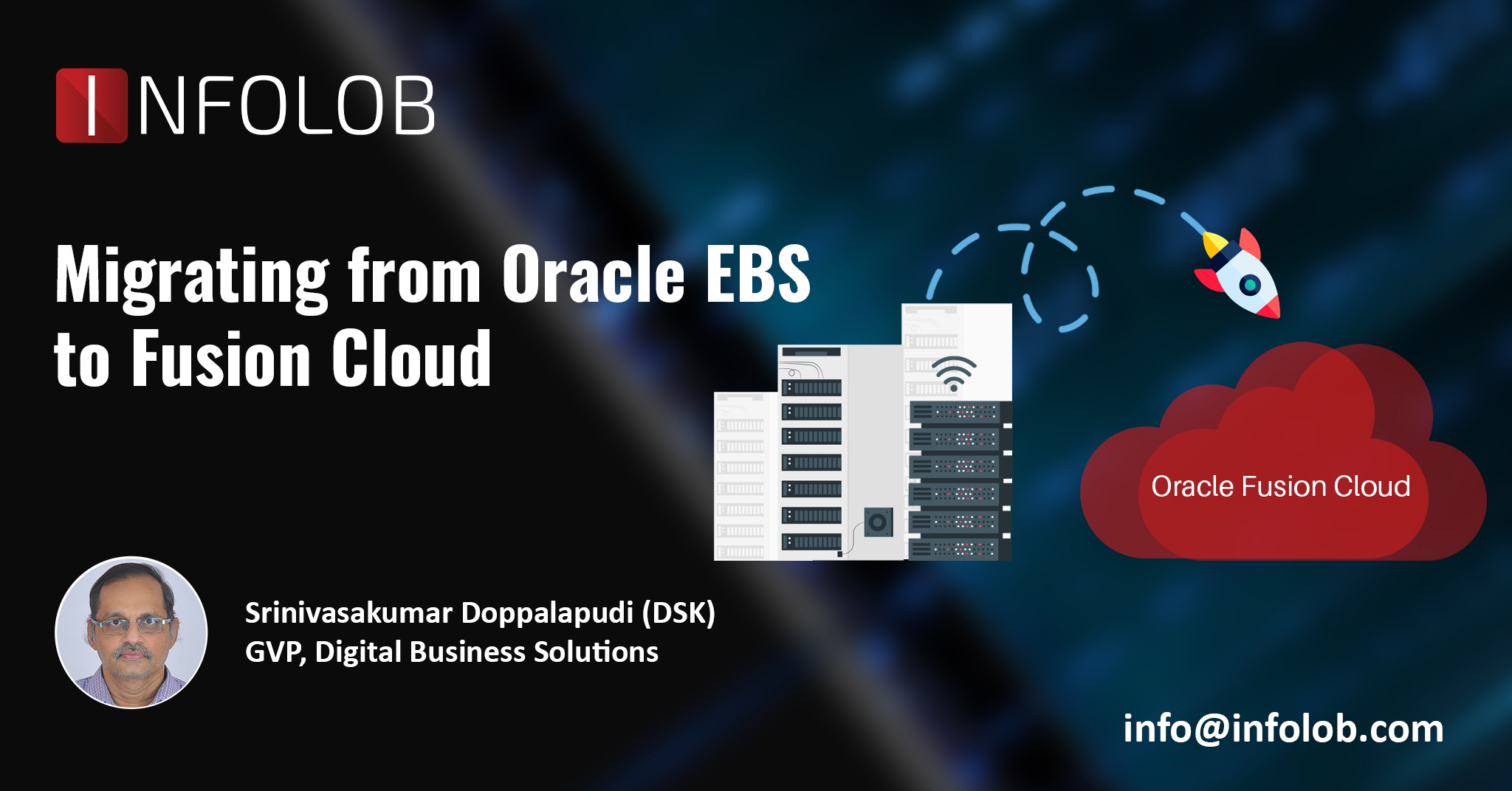Factors such as security, high maintenance cost, and obligations to scalability associated with on-premise software, such as the renowned E-Business Suite (EBS), are necessitating businesses to explore the benefits of their cloud counterparts. However, careful planning and execution to ensure a smooth transition and achievement of optimal performance, functionality, and cost outcomes should be the end targets. Also, my Business Apps Transformation team here at INFOLOB frequently note a lack of understanding amongst our customers that managing change effectively, aligning teams, and seeking expert consultation is critical during this transformative shift.
Related blogs:
EBS Suite to Fusion Cloud: Updates, Security Concerns, and Challenges
Getting down to the specifics, implementing updates while ensuring security within the EBS Suite poses significant challenges for businesses that do not always make sense to everybody in the organization. They fail to understand that in an on-premise environment, hardware refreshes and software updates are also necessary but can be significantly more daunting, and costly, and can result in system downtime. Still, many organizations defer these updates, risking vulnerability and prolonged issue resolution. Similarly, maintaining security through regular updates becomes expensive and necessary that not every leader is able to easily figure out other than a CIO.
4 Baseline Advantages of Migrating to Fusion Cloud
Cost Containment: Migration to Fusion Cloud is proven to reduce the TCO by 1/3rd compared to on-premises deployments. It achieves this by minimizing capital expenses, efficient maintenance of data centers, eliminating of server hardware, and leveraging cloud flexibility. The “pay-as-you-go” usage model enhances financial benefits. Meanwhile, organizations can bring existing Oracle licenses to Oracle Cloud Infrastructure, leveraging previous investments and adding substantial value.
Supercloud Performance: Fusion Cloud offers a remarkable 1/3rd increase in performance and delivers 2-10 times faster reporting capabilities. Oracle Cloud Infrastructure provides superior computing power, storage, networking, and managed database instances, ensuring high-performance outcomes. It is the only platform where Oracle Database can be utilized with Oracle RAC or Oracle Database Exadata Cloud Service, offering robust configurations.
Straightened Management: Oracle provides specialized tooling and automation to streamline deployment, migration, upgrades, and maintenance processes, saving time and reducing risks. Implementations can be completed within weeks rather than months, significantly shortening the timeline.
User-Friendly Experience: Fusion Cloud offers an intuitive cloud-based interface with navigable dashboards that facilitate efficient troubleshooting. Unlike EBS, there is no need to execute multiple queries for real-time data analysis. The platform is equipped with Guided Business Processes, simplifying and expediting work completion for improved operational efficiency.

Reporting in Oracle Fusion Cloud Changes The Game
Oracle Fusion Cloud provides robust reporting tools for different user requirements:
- Oracle Transactional Business Intelligence (OTBI): Enables real-time transactional analytics, ad-hoc analysis, daily reporting, and visual representations
- BI Publisher: Designed for creating customer-facing documents and handling complex reporting needs
- Oracle Financial Reporting Studio (FR Studio): Allows users to access, design, and present financial reports and analytical data
- Smart View: An Excel-based analysis tool for slicing and dicing analysis, leveraging the familiar interface of Microsoft Excel
These reporting capabilities enable organizations to gather critical insights and enhance decision-making within Oracle Fusion Cloud. It is a never-before ease and satisfaction that could never be achieved without the consideration we just talked of, and without CIOs making the due efforts on its demystification for other leaders.
Fusion Architecture: Close Up
Oracle Fusion applications are built on the robust Oracle Fusion Middleware technology, encompassing components like identity management, SOA, BI, ODI, BPM, and WebLogic communication. This architecture enables seamless integration with the database through the WebLogic server. Fusion adopts a service-oriented architecture (SOA) that leverages orchestration technology to assemble diverse services, offering comprehensive functionality. This modern approach differs from the Oracle application architecture in EBS, which centered around forms and a database-centric approach.
Oracle E-Business Suite to Fusion Cloud: Quick Handbook
Chapter 1 – Considerations Before Migration
- Generate a summary of non-migratable data by product and feature
- Involve customer review and decision-making before starting the migration process
- Utilize the EBS to Fusion Migration offering in the Fusion setup manager to check detailed exception reports for all products
- Map domain values for data migration using ODI interfaces
Chapter 2 – Migratable Data
- Set-up data, and transactional data can be migrated
- Descriptive Flex Fields related to controlled customizations can be migrated
Chapter 3 – Non-Migratable Data
- Extension using API hooks cannot be migrated
- OA Personalization Framework customizations in e-Business Suite will not be migrated
- Oracle Forms personalization and customizations cannot be migrated
- Oracle Workflows customizations cannot be migrated
- Report customization cannot be migrated
- Non-controlled Schema Customization cannot be migrated
Chapter 4 – Deployment Options
- On-premise deployment hosted by the enterprise
- Public cloud-hosted over the Internet by Oracle as a Software-as-a-Service (SaaS)
- Private Cloud deployment hosted internally behind a firewall as a SaaS
- Hybrid deployment combining both on-premise and cloud implementations
Chapter 5 – Role of An Implementation Partner like INFOLOB in Migration
- Facilitate the transfer of mission-critical systems to the cloud with minimal downtime and risk
- Accelerate the migration journey through established, mature, and rigorous operational processes
- Assist in defining business case objectives and goals
- Inventory Oracle EBS applications and devise migration strategies
- Design, migrate, and validate each application using a meticulous and iterative approach
- Implement solutions leveraging Artificial Intelligence (AI) and Machine Learning (ML) to detect threats
- Handle day-to-day post-migration administration, reducing the internal team’s IT management workload, and more
For all business applications support services, please reach out to us:





